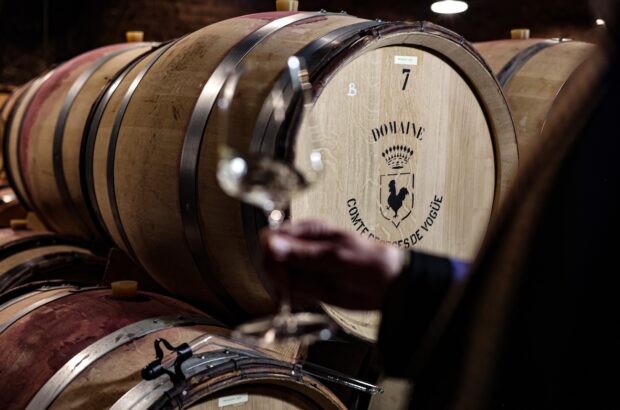Do you ever find it difficult to read wine tasting notes?
Wine tasting will always have a subjective, personal quality, because taste and smell are so inextricably bound to an individual’s own reference points. Language, too, is both collective and individual, and you may identify more with one wine critic over another.
But, there are some common wine descriptive words that it is useful to know, and can help you understand what to expect from a style of wine.
As well as flavours, tasting notes can tell you about other aspects of the wine. Andrew Jefford wrote in his guide to writing wine tasting notes ‘a wine’s structure, shape and texture are just as interesting as its aroma and flavour.’
‘[Texture] is what really separates the great from the merely good,’ said Berkmann Wine Cellars purchasing director Alex Hunt MW, in Victoria Moore’s guide to wine tasting.
Wine tasting notes: how much is too much?
There has been debate about the use of overly descriptive tasting notes in the wine world, as Andrew Jefford discussed in his 2015 column.
‘Each contender is trying to outdo the other, and bludgeon their rivals to death by adjectival force of arms.’
But at the same time, overly bland notes do not communicate anything.
‘Conservative, restrained wine descriptions are tedious, repetitive and soporific, and utterly fail to evoke the excitement of smelling and tasting wine,’ wrote Jefford.
When writing tasting notes, Jefford advises to keep use analogical descriptors in moderation – half a dozen at the most.
‘Keep it simple when it comes to tasting notes,’ wine educator Kevin Zraly told Victoria Moore.
Below is what our experts put together.
Reading wine tasting notes
Dry white wines

Credit: Patrick Grabham / Decanter
Example wine: Louis Latour, Meursault, 1998
Tasting Note: Clean, limpid medium yellow with a hint of green, quite rich, a really lovely colour. Touch of new wood on the nose, ripe melony fruit, slightly exotic, stylish and very expressive. Fine, floral, honeysuckle fruit on the palate, with hazelnut overtones, rich and quite buttery, yet good lemony acidity, very elegant but still young. Very good balance, oak and fruit well blended in, an excellent example of grape variety dominated by terroir, great persistence, very good future.
- limpid – literally transparent, like clear water, while retaining its colour
- rich – showing ripeness and viscosity, usually from the legs or ‘tears’ that form on the sides of the glass than from depth of colour
- new wood – the vanilla-vanillin aroma of new oak, whether French or American
- melony – signifies ripe, slightly exotic fruit, usually referring to Chardonnay. More exotic fruits could be pineapple, guava
- expressive – expressive of either its grape variety, terroir or both. Stylish + expressive would be a finely turned out wine with character
- floral – usual on the nose, but on the palate means the blend of florality and flavour
- honeysuckle/hazelnut – typical expressions of a the Chardonnay grown in Meursault, rounded and attractive
- buttery – the impression of ripeness with a certain fleshiness, often the result of barrel fermentation or barrel ageing
Aromatic and sweet white wines

Credit: Patrick Grabham / Decanter
Example wine: Château Lafaurie-Peyraguey, Sauternes, 1er Cru Classé 1985
Tasting note: Pure gold in colour, with hints of yellow still and no amber. Floral, honeyed-peach and apricot, an impression of great sweetness but not over-heady . Honey and lanolin flavours on the palate, rich barley sugar sweetness, great fruit extract, good botrytis, luscious, classy finish. A fully sweet Sauternes from a fine year, tasting superbly at 15 years, with as long again in front of it.
- gold – a golden colour indicates both original ripeness and sweetness as well as maturity. In 10 years time the golden colour will have taken on an amber glow, and the colour will progress from gold to amber as it matures further
- floral – on the nose the smell of flowers or blossom as opposed to the smell of fruits
- honeyed – many sweet wines do literally smell of honey, but hear it refers to ripe concentration and richness that is epitomised by the smell of honey
- peach / apricot – the aroma of these stone fruits is also found in aromatice wines from the Viognier grape, and denotes warm, summery ripeness
- heady – concentration of richness that literally goes to one’s head. An over-heady wine would be over-powering and unbalanced
- lanolin – a smooth, creamy impression often associated with the Semillon grape at advanced ripeness, the opposite of tart
- barley sugar – concentrated sweetness, but not sugary
- botrytis – the effect of reducing the water in the grapes, thus increasing the sugars, when they are attacked by pourriture noble, or noble rot
Light red wines

Credit: Patrick Grabham / Decanter
Example wine: Allegrini, Valpolicella Classico Superiore 1998
Tasting note: Brick red colour, very fresh and young looking. Fine, rose-like like bouquet, some sweetness in attack, drier on the second nose. Clean, cherry-like fruit flavours on the palate, a hint of wood and a touch of bitter almonds, good balance, long, dry finish. Fine long flavour despite the liveliness, natural acidity present, a wine for food.
- brick red – denotes the absence of violet or purple colours of some very young wines, more a lack of intensity than a sense of maturity
- rose-like – a delicate aroma, yet with a certain ripeness, always floral
- attack – the strong first impression, one that jumps out of the glass
- second nose – the more studied reflection gained by swirling the wine in the glass to release more than it does on the first impression
- cherry-like – unless cited as ‘black cherries’ which carry a definite impression of ripeness, cherry-like indicates firm, vibrant fruit with a touch of acidity and none of the sweetness of, say, blackcurrants
- wood – a sense of firmness and tannin, as opposed to ‘oaky’, which refers to the new casks in which the wine will have been aged
- bitter almonds – often associated with cherries, a certain fruity bitterness, more refreshing than unpleasant
- food – wines with exuberant, unrestrained fruit do not go well with food, for their fruitiness dominates. A ‘food wine’ is one that complements a meal
Medium-bodied red wines

Credit: Patrick Grabham
Example wine: Château Léoville-Barton, St-Julien, 2ème Cru Classé 1990
Tasting note: Deep colour, velvety red, no real sign of ageing, still very youthful and firm berry fruits on the nose, heavily Cabernet in style, blackcurrant leaf, with a cedar wood / cigar box spice coming through, concentrated fragrance followed by rich fruit. Same concentrated, tightly knit fruit on the palate, wonderful ripeness, still showing youthful black currants and blackberries, firm backbone but ripe tannins, superb structure. Overall, a classic Medoc from a top chateau in a great vintage. Ripe enough to enjoy now, but still a long way off its best, which should be during its third decade.
- velvety – a deep, rich smooth looking colour that always denotes very good ripeness at vintage time
- firm – Reserved and with potential to develop, a positive description, not to be confused with “hard”, which is generally negative
- berry fruits – small red fruits, covering the berry, cherry and the currant families. Individual red varietals tend when young to be dominated by one or two of these red fruits
- cedar wood / cigar box – cedar wood is a characteristic of semi-mature and mature Cabernet-dominant wines especially from the Medoc, owing more to the style of wine than to oak ageing. Cigar box is similar – found in many Cabernet & Merlot wines
- tightly knit – flavours that are firmly woven together, not loose or diffuse, shows good potential for development
- backbone – an essential element for a well-structured wine
- tannins – substance existing in the skin and pips of a grape that is necessary for the long development of a red wine. Tannin can also be obtained from the oak barrels in which such wines are matured
- structure – a sense of solidity that has more to do with each element holding together than with weight







